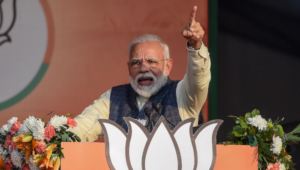Over 12 months after being announced by India’s federal government, the raft of defence industry reforms and policies lie in tatters. As do the aspirations of the vocal strategic community and domestic defence industry which, at the time, gratuitously and dutifully hailed what they termed as ‘path-breaking reforms’.
A reality audit is called for of finance minister Nirmala Sitharaman’s grand plans, revealed at a press conference last May to corporatise all the 41 units of the Ordnance Factory Board (OFB), a phased ban on materiel imports and a separate capital budget for domestically sourcing military equipment for services’ modernisation. A hike in the cap on Foreign Direct Investment (FDI) in the defence sector from 49% to 74%, via the ‘automatic route without prior governmental approval, completed the finance minister’s magical package.
Firstly, corporatising the OFB that produces an assortment of munitions, tanks, howitzers and rifles in addition to other varied armaments and military kit comprised the major plank of Sitharaman’s economic package aimed at achieving atmanirbharta or self-reliance in meeting the country’s defence requirements.
Forgotten
But it all seems forgotten today and, in hindsight, it appears that the proposal was not only untimely, but one that smacked of false bravado. It is now obvious that the Ministry of Defence (MoD) itself was not clear about how to corporatise the OFB’s vast network of 41 units spread across the country, many inherited from the British colonial government after independence. Besides, the MoD seems to have little or no stomach to deal with the inevitable hostile riposte from either OFB workers, or its management staff, headquartered in Kolkata, or both.
In fact, similar half-hearted moves in 2015 had been steadfastly opposed by the OFB’s 70,000 strong unionised workforce and were summarily abandoned. There appears to be little or no evidence that circumstances had altered in any way to meet Sitharaman’s aspirations.
The government was, no doubt, egged on to take the step of OFB’s corporatisation by the community of vocal strategic experts, comprising retired service officers, and the MoD’s know-all civil servants with their exaggerated notions of intellectual superiority and omnipotence. Ironically, both these groups who never tire of pillorying India’s nine defence public sector units, or DPSUs, for their inefficiency and technological overreach, sought the OFB’s corporatisation into a mirror image of the DPSUs, further perpetuating incompetence.
It’s a reality that corporatisation cannot transmogrify ordnance factories overnight into industrial giants producing state-of-the-art materiel. Besides, apart from a massive administrative reorganisation – not an easy undertaking for the MoD’s largely clueless bureaucracy – huge investment would be needed to upgrade the ordnance factories’ infrastructure and research and development capabilities, which the penurious MoD can ill afford.
Alongside, the order raising the FDI cap to 74% was issued in September 2020 with several riders that almost nullified the promise of automatic investment, at a time when monies received by India’s defence sector, after it was opened to overseas investment in 2001, stood at a paltry $10.05 million. Over the next three months, till December 2020, this amount increased to $10.15 million, less than even what a small nation like Uganda has cumulatively invested in India.
Data for subsequent quarters is not available on the Department for Promotion of Industry and Internal Trade (DPIIT) website, making it difficult to assess the impact of the government’s decision on India’s atmanirbharta mission in defence. Empirical evidence, sketchy industrial data, and equally imprecise published accounts, however, suggest that major foreign investment into India’s military sector is highly unlikely, due not only to the MoD’s complex Defence Acquisition Procedure 2020, but also to the continually changing policy framework and arbitrary decisions to suit domestic interests.
Earlier in August 2020, the newly formed Department of Military Affairs (DMA), tasked more with managing service matters than industrial promotion, notified a ‘negative list’ of 101 military platforms and equipment whose import would be banned in a phased manner, the last ban coming into effect in December 2025.
The DMA declared that in keeping with MoD policy, these proscribed items would hence be sourced locally to further the government’s atmanirbharta initiative. The embargo on 69 of these 101 items was to have been activated by end-2020, and for another 11 by December 2021; but information on the entire exercise remains opaque, rendering it difficult, if not impossible, to arrive at definitive conclusions on the anticipated outcome.
But the critical aspect of this entire policy is whether domestic industry can supply the ‘banned’ items by conforming to continually changing specifications, which the military is notorious for, with regard to the equipment it buys. More importantly, however, is the issue of when the cash-strapped MoD will eventually opt to buy this equipment to make it financially viable for local industry to series build it.
Ostrich like
Paradoxically, indigenous defence vendors, desperate for MoD orders to sustain themselves, had also welcomed Sitharaman’s decision to allocate a separate provision in the capital budget for local procurement. But ostrich-like, they chose to gloss over the reality that this outlay would be part of an already stressed capital budget which is Rs 77,182 crore less than what the services had demanded in fiscal year 2021-22, and barely enough to pay for the committed contractual liabilities. In keeping with Samuel Beckett’s eponymous play, India’s defence industry seems perpetually to be waiting for Godot.
For now, the deadly second wave of COVID-19 that has ravaged India has handed the government an alibi for delaying Sitharaman’s ambitious proposals. But these circumstances are not perennial, and sooner than later all these ill-conceived policies, announced without adequate thought given to either their efficacy, feasibility, or advantage, will come to haunt the MoD that seems to have lost touch with reality and workability of its ideas.
Imprecise ideas, announced sporadically, with no strategy to execute them, can lend momentary plausibility to their declared objectives, but tend to run out of steam thereafter. According to Bobby Unser, the American race car champion who died earlier this month in Albuquerque, New Mexico ‘success is where preparation and opportunity meet’.
Sadly, both are missing in the MoD’s policy reforms announced last year, as appears their eventual implementation.
(Courtesy: The Wire.)




